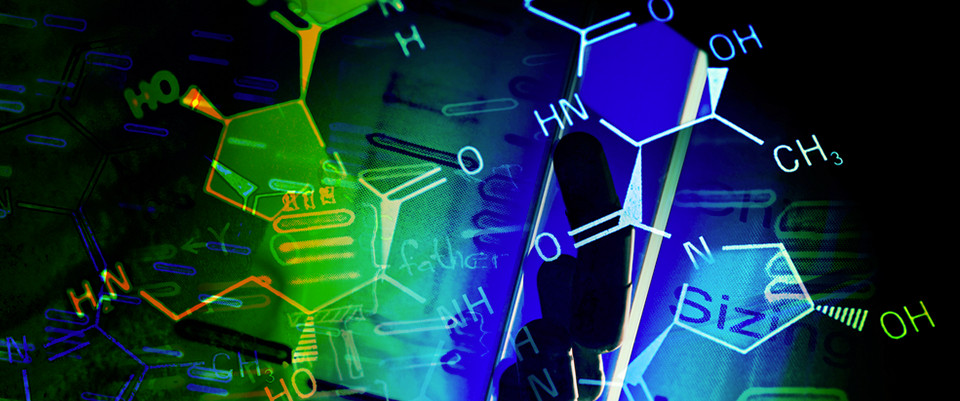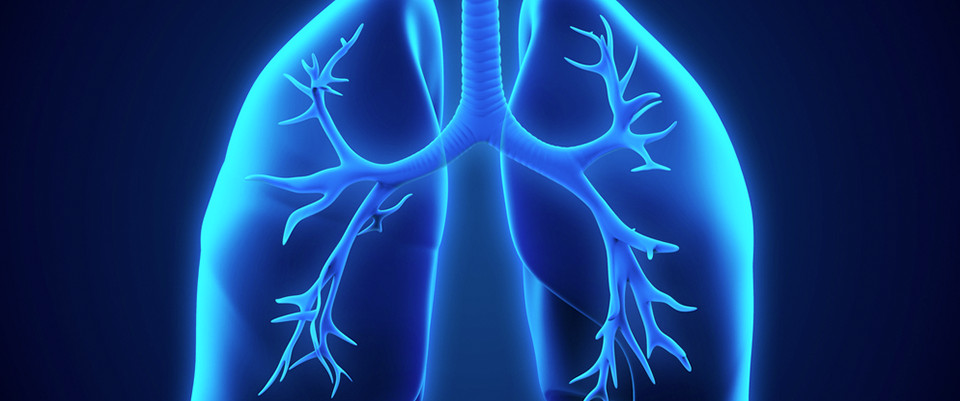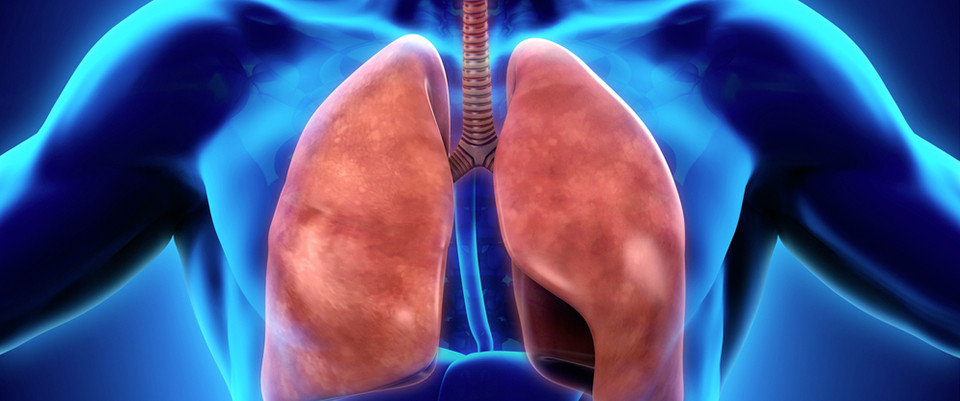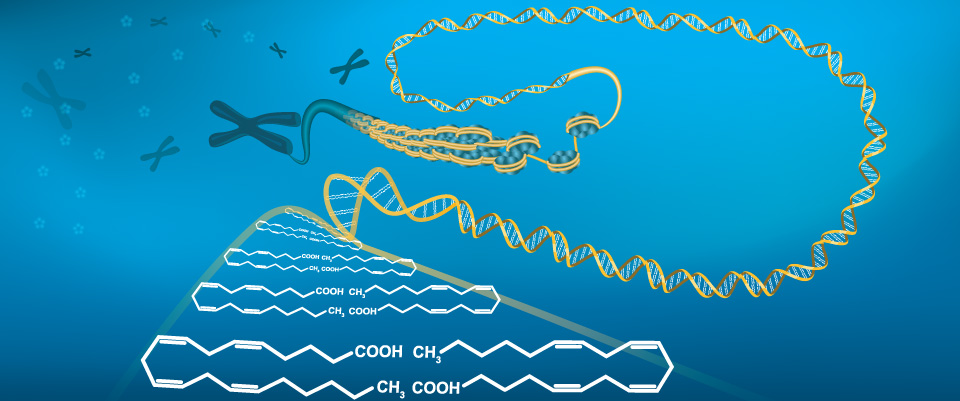PubMed
Can the use of magnetized water affect the seedling development and the metabolite profiles of two different species: Lentil and durum wheat?
Front Plant Sci. 2023 Feb 14;13:1066088. doi: 10.3389/fpls.2022.1066088. eCollection 2022.ABSTRACTSeedlings of durum wheat and lentil were utilized to investigate the efficiency of magnetic water on growth and metabolic epicotyl profile. Tap water was passed through a magnetic device with a flow rate of max. 12900 - 13200 Gauss (G). Seeds and plantlets were grown on sand-free paper soaked by magnetized water, with unmagnetized tap water used in a control group. The growth parameters were collected at three time points (48, 96, and 144 hours after treatment), the same times at which metabolomic analysis was conducted on seeds, roots, and epicotyls. Although the effects varied with the species, tissues, and time point considered, compared with tap water (TW), the use of magnetized water treatment (MWT) led to higher root elongation in both genotypes. On the contrary, epicotyl length was not affected by treatment both in durum wheat and lentil. The results indicate that the use of magnetized water in agriculture can be considered a sustainable technology to promote plant development and quality with reduced and more efficient water usage, leading to cost-saving and environmental protection.PMID:36865947 | PMC:PMC9971934 | DOI:10.3389/fpls.2022.1066088
Metabolic imprint induced by seed halo-priming promotes a differential physiological performance in two contrasting quinoa ecotypes
Front Plant Sci. 2023 Feb 14;13:1034788. doi: 10.3389/fpls.2022.1034788. eCollection 2022.ABSTRACT"Memory imprint" refers to the process when prior exposure to stress prepares the plant for subsequent stress episodes. Seed priming is a strategy to change the performance of seedlings to cope with stress; however, mechanisms associated with the metabolic response are fragmentary. Salinity is one of the major abiotic stresses that affect crop production in arid and semiarid areas. Chenopodium quinoa Willd. (Amaranthaceae) is a promising crop to sustain food security and possesses a wide genetic diversity of salinity tolerance. To elucidate if the metabolic memory induced by seed halo-priming (HP) differs among contrasting saline tolerance plants, seeds of two ecotypes of Quinoa (Socaire from Atacama Salar, and BO78 from Chilean Coastal/lowlands) were treated with a saline solution and then germinated and grown under different saline conditions. The seed HP showed a more positive impact on the sensitive ecotype during germination and promoted changes in the metabolomic profile in both ecotypes, including a reduction in carbohydrates (starch) and organic acids (citric and succinic acid), and an increase in antioxidants (ascorbic acid and α-tocopherol) and related metabolites. These changes were linked to a further reduced level of oxidative markers (methionine sulfoxide and malondialdehyde), allowing improvements in the energy use in photosystem II under saline conditions in the salt-sensitive ecotype. In view of these results, we conclude that seed HP prompts a "metabolic imprint" related to ROS scavenger at the thylakoid level, improving further the physiological performance of the most sensitive ecotype.PMID:36865946 | PMC:PMC9971973 | DOI:10.3389/fpls.2022.1034788
Protective effects of <em>Descurainia sophia</em> seeds extract and its fractions on pulmonary edema by untargeted urine and serum metabolomics strategy
Front Pharmacol. 2023 Feb 14;14:1080962. doi: 10.3389/fphar.2023.1080962. eCollection 2023.ABSTRACTBackground: Descurainia sophia seeds (DS) is a herbal medicine in traditional Chinese medicine (TCM) for treating lung diseases. We aimed to evaluate the therapeutic effect of DS and five of its fractions upon pulmonary edema (PE) through metabolomics analysis (MA) of urine and serum samples of rats. Methods: A PE model was established by intrathoracic injection of carrageenan. Rats were pretreated with DS extract or its five fractions (polysaccharides (DS-Pol); oligosaccharides (DS-Oli); flavonoid glycosides (DS-FG); flavonoid aglycone (DS-FA); fat oil fraction (DS-FO)) for seven consecutive days. Forty-eight hours after carrageenan injection, lung tissues were subjected to histopathology. MA of urine and serum was done by ultra-high performance liquid chromatography-quadrupole time-of-flight mass spectrometry, respectively. Principal component analysis and orthogonal partial least squares-discriminant analysis were operated for the MA of rats and potential biomarkers related to treatment. Heatmaps and metabolic networks were constructed to explore how DS and its five fractions act against PE. Results: DS and its five fractions could all attenuate pathologic lung injury to different degrees, and DS-Oli, DS-FG, and DS-FO had a more potent effect compared with DS-Pol and DS-FA. DS-Oli, DS-FG, DS-FA, and DS-FO could regulate the metabolic profiles of PE rats, but DS-Pol was less potent. According to MA, the five fractions could improve PE to some degree due to their anti-inflammatory, immunoregulatory, and renoprotective activities by mediating the metabolism of taurine, tryptophan, and arachidonic acid. However, DS-Oli, DS-FG, and DS-FO had more important roles in edema-fluid reabsorption, and reduction of vascular leakage through regulating the metabolism of phenylalanine, sphingolipid and bile acid. Finally, heatmaps and hierarchical clustering analysis indicated DS-Oli, DS-FG, and DS-FO to be more efficacious than DS-Pol or DS-FA against PE. The five fractions of DS had a synergistic effect on PE from different aspects, thereby constituting the entire efficacy of DS. DS-Oli, DS-FG, or DS-FO could be used as an alternative to DS. Conclusion: MA combined with use of DS and its fractions provided novel insights into the mechanism of action of TCM.PMID:36865914 | PMC:PMC9971919 | DOI:10.3389/fphar.2023.1080962
Effect of <em>Lactobacillus plantarum</em> P9 on defecation, quality of life and gut microbiome in individuals with chronic diarrhoea: Protocol for a randomized, double-blind, placebo-controlled clinical trial
Contemp Clin Trials Commun. 2023 Feb 1;32:101085. doi: 10.1016/j.conctc.2023.101085. eCollection 2023 Apr.ABSTRACTBACKGROUND: Probiotics may be an ideal choice for these patients, given it can improve the defecation and quality of life of individuals with chronic diarrhoea. However, evidence-based medical research is still limited to support its use as a diarrhoea agent.METHOD: A randomized, double-blind, placebo-controlled clinical trial is designed to pinpoint the efficiency and possible action modes of probiotics for chronic diarrhoea. 200 eligible volunteers with chronic diarrhoea are randomly assigned to a probiotic group (orally taking Lactobacillus plantarum p9 probiotics powder) or a placebo group. Except an independent project administrator who will be responsible for unblinding, the other researchers are blinded. Primary outcome is diarrhoea severity score, and secondary outcomes include weekly mean frequency of defecation, weekly mean stool appearance score, weekly mean stool urgency score, emotional state score, gut microbiome, and faecal metabolome. Each outcome measure will be assessed at the timepoints of pre-administration (day 0), administration (day 14 and/or 28), and post-administration (day 42) to identity inter- and intra-groups differences. Adverse events will be recorded to evaluate the safety of L. plantarum p9.DISCUSSION: The study protocol will provide high-quality evidence for the use of probiotics as a diarrhoea agent when it is strictly conducted out, providing evidence regarding whether and to what extent L. plantarum p9 can improve the defecation and well-being of individuals with chronic diarrhoea.TRIAL REGISTRATION: Chinese Clinical Trial Registry (ChiCTR) (NO. ChiCTR2000038410). Registered on November 22, 2020, https://www.chictr.org.cn/showproj.aspx?proj=56542.PMID:36865679 | PMC:PMC9970898 | DOI:10.1016/j.conctc.2023.101085
Glutamine metabolism inhibition has dual immunomodulatory and antibacterial activities against <em>Mycobacterium tuberculosis</em>
bioRxiv. 2023 Feb 23:2023.02.23.529704. doi: 10.1101/2023.02.23.529704. Preprint.ABSTRACTAs one of the most successful human pathogens, Mycobacterium tuberculosis ( Mtb ) has evolved a diverse array of determinants to subvert host immunity and alter host metabolic patterns. However, the mechanisms of pathogen interference with host metabolism remain poorly understood. Here we show that a novel glutamine metabolism antagonist, JHU083, inhibits Mtb proliferation in vitro and in vivo. JHU083-treated mice exhibit weight gain, improved survival, a 2.5 log lower lung bacillary burden at 35 days post-infection, and reduced lung pathology. JHU083 treatment also initiates earlier T-cell recruitment, increased proinflammatory myeloid cell infiltration, and a reduced frequency of immunosuppressive myeloid cells when compared to uninfected and rifampin-treated controls. Metabolomics analysis of lungs from JHU083-treated Mtb -infected mice revealed reduced glutamine levels, citrulline accumulation suggesting elevated NOS activity, and lowered levels of quinolinic acid which is derived from the immunosuppressive metabolite kynurenine. When tested in an immunocompromised mouse model of Mtb infection, JHU083 lost its therapeutic efficacy suggesting the drug’s host-directed effects are likely to be predominant. Collectively, these data reveal that JHU083-mediated glutamine metabolism inhibition results in dual antibacterial and host-directed activity against tuberculosis.PMID:36865287 | PMC:PMC9980128 | DOI:10.1101/2023.02.23.529704
Multi-omic screening of invasive GBM cells in engineered biomaterials and patient biopsies reveals targetable transsulfuration pathway alterations
bioRxiv. 2023 Feb 24:2023.02.23.529575. doi: 10.1101/2023.02.23.529575. Preprint.ABSTRACTWhile the poor prognosis of glioblastoma arises from the invasion of a subset of tumor cells, little is known of the metabolic alterations within these cells that fuel invasion. We integrated spatially addressable hydrogel biomaterial platforms, patient site-directed biopsies, and multi-omics analyses to define metabolic drivers of invasive glioblastoma cells. Metabolomics and lipidomics revealed elevations in the redox buffers cystathionine, hexosylceramides, and glucosyl ceramides in the invasive front of both hydrogel-cultured tumors and patient site-directed biopsies, with immunofluorescence indicating elevated reactive oxygen species (ROS) markers in invasive cells. Transcriptomics confirmed upregulation of ROS-producing and response genes at the invasive front in both hydrogel models and patient tumors. Amongst oncologic ROS, hydrogen peroxide specifically promoted glioblastoma invasion in 3D hydrogel spheroid cultures. A CRISPR metabolic gene screen revealed cystathionine gamma lyase (CTH), which converts cystathionine to the non-essential amino acid cysteine in the transsulfuration pathway, to be essential for glioblastoma invasion. Correspondingly, supplementing CTH knockdown cells with exogenous cysteine rescued invasion. Pharmacologic CTH inhibition suppressed glioblastoma invasion, while CTH knockdown slowed glioblastoma invasion in vivo . Our studies highlight the importance of ROS metabolism in invasive glioblastoma cells and support further exploration of the transsulfuration pathway as a mechanistic and therapeutic target.PMID:36865128 | PMC:PMC9980149 | DOI:10.1101/2023.02.23.529575
High fat diet ameliorates the mitochondrial cardiomyopathy of CHCHD10 mutant mice
bioRxiv. 2023 Feb 22:2023.02.22.529577. doi: 10.1101/2023.02.22.529577. Preprint.ABSTRACTMutations in CHCHD10, a mitochondrial protein with still undefined function, are associated with dominant multi-system mitochondrial diseases. CHCHD10 knock-in mice harboring a heterozygous S55L mutation (equivalent to the human pathogenic S59L mutation) develop a fatal mitochondrial cardiomyopathy. The heart of S55L knock-in mice shows extensive metabolic rewiring triggered by proteotoxic mitochondrial integrated stress response (mtISR). In the mutant heart, mtISR initiates well before the onset of mild bioenergetic impairments and is associated with a shift from fatty acid oxidation to glycolytic metabolism and widespread metabolic imbalance. We tested therapeutic interventions to counteract the metabolic rewiring and ameliorate the metabolic imbalance. Heterozygous S55L mice were subjected to chronic high fat diet (HFD) to decrease insulin sensitivity and glucose uptake and enhance fatty acid utilization in the heart. Metabolomics and gene expression profiles demonstrated that HFD achieved an increase of fatty acid utilization in the heart accompanied by a decrease in cardiomyopathy markers. Surprisingly, HFD also decreased the accumulation of aggregated CHCHD10 in the S55L heart. Importantly, HFD increased the survival of mutant female mice exposed to acceleration of the mitochondrial cardiomyopathy associated with pregnancy. Our findings indicate that metabolic alterations can be effectively targeted for therapeutic intervention in mitochondrial cardiomyopathies associated with proteotoxic stress.PMID:36865125 | PMC:PMC9980108 | DOI:10.1101/2023.02.22.529577
Insights and perspectives into clinical biomarker discovery in pediatric heart failure and congenital heart disease-a narrative review
Cardiovasc Diagn Ther. 2023 Feb 28;13(1):83-99. doi: 10.21037/cdt-22-386. Epub 2023 Jan 9.ABSTRACTBACKGROUND AND OBJECTIVE: Heart failure (HF) in the pediatric population is a multi-factorial process with a wide spectrum of etiologies and clinical manifestations, that are distinct from the adult HF population, with congenital heart disease (CHD) as the most common cause. CHD has high morbidity/mortality with nearly 60% developing HF during the first 12 months of life. Hence, early discovery and diagnosis of CHD in neonates is pivotal. Plasma B-type natriuretic peptide (BNP) is an increasingly popular clinical marker in pediatric HF, however, in contrast to adult HF, it is not yet included in pediatric HF guidelines and there is no standardized reference cut-off value. We explore the current trends and prospects of biomarkers in pediatric HF, including CHD that can aid in diagnosis and management.METHODS: As a narrative review, we will analyze biomarkers with respect to diagnosis and monitoring in specific anatomical types of CHD in the pediatric population considering all English PubMed publications till June 2022.KEY CONTENT AND FINDINGS: We present a concise description of our own experience in applying plasma BNP as a clinical biomarker in pediatric HF and CHD (tetralogy of fallot vs. ventricular septal defect) in the context of surgical correction, as well as untargeted metabolomics analyses. In the current age of Information Technology and large data sets we also explored new biomarker discovery using Text Mining of 33M manuscripts currently on PubMed.CONCLUSIONS: (Multi) Omics studies from patient samples as well as Data Mining can be considered for the discovery of potential pediatric HF biomarkers useful in clinical care. Future research should focus on validation and defining evidence-based value limits and reference ranges for specific indications using the most up-to-date assays in parallel to commonly used studies.PMID:36864972 | PMC:PMC9971290 | DOI:10.21037/cdt-22-386
Metabolic insights into phosphofructokinase inhibition in bloodstream-form trypanosomes
Front Cell Infect Microbiol. 2023 Feb 14;13:1129791. doi: 10.3389/fcimb.2023.1129791. eCollection 2023.ABSTRACTPreviously, we reported the development of novel small molecules that are potent inhibitors of the glycolytic enzyme phosphofructokinase (PFK) of Trypanosoma brucei and related protists responsible for serious diseases in humans and domestic animals. Cultured bloodstream-form trypanosomes, which are fully reliant on glycolysis for their ATP production, are rapidly killed at submicromolar concentrations of these compounds, which have no effect on the activity of human PFKs and human cells. Single-day oral dosing cures stage 1 human trypanosomiasis in an animal model. Here we analyze changes in the metabolome of cultured trypanosomes during the first hour after addition of a selected PFK inhibitor, CTCB405. The ATP level of T. brucei drops quickly followed by a partial increase. Already within the first five minutes after dosing, an increase is observed in the amount of fructose 6-phosphate, the metabolite just upstream of the PFK reaction, while intracellular levels of the downstream glycolytic metabolites phosphoenolpyruvate and pyruvate show an increase and decrease, respectively. Intriguingly, a decrease in the level of O-acetylcarnitine and an increase in the amount of L-carnitine were observed. Likely explanations for these metabolomic changes are provided based on existing knowledge of the trypanosome's compartmentalized metabolic network and kinetic properties of its enzymes. Other major changes in the metabolome concerned glycerophospholipids, however, there was no consistent pattern of increase or decrease upon treatment. CTCB405 treatment caused less prominent changes in the metabolome of bloodstream-form Trypanosoma congolense, a ruminant parasite. This agrees with the fact that it has a more elaborate glucose catabolic network with a considerably lower glucose consumption rate than bloodstream-form T. brucei.PMID:36864883 | PMC:PMC9971811 | DOI:10.3389/fcimb.2023.1129791
Analysis of the volatile organic compounds of epidural analgesia-ameliorated metabolic disorder in pregnant women with gestational diabetes mellitus based on untargeted metabolomics
Front Endocrinol (Lausanne). 2023 Feb 14;14:1009888. doi: 10.3389/fendo.2023.1009888. eCollection 2023.ABSTRACTGestational diabetes mellitus (GDM) is a metabolic disease with an increasing annual incidence. Our previous observational study found that pregnant women with gestational diabetes had mild cognitive decline, which may be related to methylglyoxal (MGO). This study aimed to investigate whether labor pain aggravates the increase in MGO and explored the protective effect of epidural analgesia on metabolism in pregnant women with GDM based on solid-phase microextraction gas chromatography/mass spectrometry (SPME/GC-MS). Pregnant women with GDM were divided into a natural birth group (ND group, n = 30) and epidural analgesia group (PD group, n = 30). After fasting for ≥ 10 h overnight, venous blood samples were collected pre- and post-delivery to detect MGO, interleukin-6 (IL-6), and 8-epi-prostaglandin F2 alpha (8-iso-PGF2α) by ELISA. Serum samples were analyzed for volatile organic compounds (VOCs) using SPME-GC-MS. MGO, IL-6, and 8-iso-PGF2α levels in the ND group increased significantly post-delivery (P < 0.05) and were significantly higher in this group than the levels in the PD group (P < 0.05). Compared to the PD group, VOCs in the ND group increased significantly post-delivery. Further results indicated that propionic acid may be associated with metabolic disorders in pregnant women with GDM. Epidural analgesia can effectively improve the metabolism and immune function in pregnant women with GDM.PMID:36864845 | PMC:PMC9970997 | DOI:10.3389/fendo.2023.1009888
Quality marker discovery of Danggui Jianzhong decoction for treating primary dysmenorrhoea based on chinmedomics strategy
Phytomedicine. 2023 Mar 2;115:154724. doi: 10.1016/j.phymed.2023.154724. Online ahead of print.ABSTRACTBACKGROUND: Danggui Jianzhong Decoction (DGJZD) has been proven as an effective classical prescription for clinically treating primary dysmenorrhoea (PD). However, the industrialisation development and drug innovation of DGJZD remain limited due to its undefined effective constituents and quality markers (Q-markers).PURPOSE: Elucidating the Q-markers of DGJZD, which is related to clinical efficacy.METHODS: In accordance with chinmedomics strategy, we evaluated the therapeutic efficacy of DGJZD on the basis of the metabolomic profile and biomarker of a PD rat model to further identify the constituents of DGJZD in vivo that originated from the formula under the acting condition of DGJZD. The potential effective constituents and Q-markers were identified by mining the dynamic relation between the constituents in vivo and the biomarkers.RESULTS: Subsequently, 29 serum metabolites were characterized as biomarkers for PD, and DGJZD adjusted the levels of the primary biomarkers involved in arachidonic acid metabolism, glycerophospholipid metabolism, tryptophan metabolism as well as the synthesis of steroid hormones. Under the active condition of DGJZD, 20 prototype ingredients and 4 metabolites of DGJZD were found in vivo, five of which were mostly related with the efficacy of PD, namely, ferulic acid, zizyphusin, cinnamic acid, protocatechuic acid-3-glucoside, and azelaic acid. They were the potential pharmacodynamic constituents for treating PD, and they could be regarded as the Q-markers of DGJZD.CONCLUSION: Taken together, the Q-markers of DGJZD identified in this research are credible and assist in solving problems related to quality control and drug innovation, accelerating industrialisation development. Besides, the efficacy, mechanism and active ingredients of DGJZD for the treatment of PD were innovatively elucidated for the first time on the basis of the chinmedomics strategy for uncovering the Q-markers of drugs from the system perspective.PMID:37087788 | DOI:10.1016/j.phymed.2023.154724
Identification of Differential Metabolites Between Type 2 Diabetes and Postchronic Pancreatitis Diabetes (Type 3c) Based on an Untargeted Metabolomics Approach
Lab Med. 2023 Mar 2:lmad004. doi: 10.1093/labmed/lmad004. Online ahead of print.ABSTRACTOBJECTIVE: A nontargeted metabolomics approach was established to characterize serum metabolic profile in type 3c diabetes mellitus (T3cDM) secondary to chronic pancreatitis and compare with T2DM.METHODS: Forty patients were recruited for metabolite analysis based on liquid chromatography-mass spectrometry. Cluster heatmap and KEGG metabolic pathway enrichment analysis were used to analyze the specific and differential metabolites. The receiver operating characteristics (ROCs) were generated and correlation analysis with clinical data was conducted.RESULTS: Metabolites including sphingosine, lipids, carnitine, bile acid, and hippuric acid were found to be different between T2DM and T3cDM, mainly enriched in bile acid biosynthesis, fatty acid biosynthesis, and sphingolipid metabolic pathways. The ROCs were generated with an area under the curve of 0.907 (95% confidence interval, 0.726-1) for the model with 15 metabolites.CONCLUSION: T3cDM is characterized by increased sphingosine, carnitine, bile acid, and most lipids, providing novel biomarkers for clinical diagnosis and a future direction in research on pathophysiological mechanisms.PMID:36864551 | DOI:10.1093/labmed/lmad004
Immunogenic cell death in cancer: concept and therapeutic implications
J Transl Med. 2023 Mar 2;21(1):162. doi: 10.1186/s12967-023-04017-6.ABSTRACTMammalian cells responding to specific perturbations of homeostasis can undergo a regulated variant of cell death that elicits adaptive immune responses. As immunogenic cell death (ICD) can only occur in a precise cellular and organismal context, it should be conceptually differentiated from instances of immunostimulation or inflammatory responses that do not mechanistically depend on cellular demise. Here, we critically discuss key conceptual and mechanistic aspects of ICD and its implications for cancer (immuno)therapy.PMID:36864446 | DOI:10.1186/s12967-023-04017-6
Untargeted profiling of secondary metabolites and phytotoxins associated with stemphylium blight of lentil
Planta. 2023 Mar 2;257(4):73. doi: 10.1007/s00425-023-04105-3.ABSTRACTStemphylium botryosum alters lentil secondary metabolism and differentially affects resistant and susceptible genotypes. Untargeted metabolomics identifies metabolites and their potential biosynthetic pathways that play a crucial role in resistance to S. botryosum. The molecular and metabolic processes that mediate resistance to stemphylium blight caused by Stemphylium botryosum Wallr. in lentil are largely unknown. Identifying metabolites and pathways associated with Stemphylium infection may provide valuable insights and novel targets to breed for enhanced resistance. The metabolic changes following infection of four lentil genotypes by S. botryosum were investigated by comprehensive untargeted metabolic profiling employing reversed-phase or hydrophilic interaction liquid chromatography (HILIC) coupled to a Q-Exactive mass spectrometer. At the pre-flowering stage, plants were inoculated with S. botryosum isolate SB19 spore suspension and leaf samples were collected at 24, 96 and 144 h post-inoculation (hpi). Mock-inoculated plants were used as negative controls. After analyte separation, high-resolution mass spectrometry data was acquired in positive and negative ionization modes. Multivariate modeling revealed significant treatment, genotype and hpi effects on metabolic profile changes that reflect lentil response to Stemphylium infection. In addition, univariate analyses highlighted numerous differentially accumulated metabolites. By contrasting the metabolic profiles of SB19-inoculated and mock-inoculated plants and among lentil genotypes, 840 pathogenesis-related metabolites were detected including seven S. botryosum phytotoxins. These metabolites included amino acids, sugars, fatty acids and flavonoids in primary and secondary metabolism. Metabolic pathway analysis revealed 11 significant pathways including flavonoid and phenylpropanoid biosynthesis, which were affected upon S. botryosum infection. This research contributes to ongoing efforts toward a comprehensive understanding of the regulation and reprogramming of lentil metabolism under biotic stress, which will provide targets for potential applications in breeding for enhanced disease resistance.PMID:36864322 | DOI:10.1007/s00425-023-04105-3
Methods and applications for single-cell and spatial multi-omics
Nat Rev Genet. 2023 Mar 2. doi: 10.1038/s41576-023-00580-2. Online ahead of print.ABSTRACTThe joint analysis of the genome, epigenome, transcriptome, proteome and/or metabolome from single cells is transforming our understanding of cell biology in health and disease. In less than a decade, the field has seen tremendous technological revolutions that enable crucial new insights into the interplay between intracellular and intercellular molecular mechanisms that govern development, physiology and pathogenesis. In this Review, we highlight advances in the fast-developing field of single-cell and spatial multi-omics technologies (also known as multimodal omics approaches), and the computational strategies needed to integrate information across these molecular layers. We demonstrate their impact on fundamental cell biology and translational research, discuss current challenges and provide an outlook to the future.PMID:36864178 | DOI:10.1038/s41576-023-00580-2
Dietary restriction of cysteine and methionine sensitizes gliomas to ferroptosis and induces alterations in energetic metabolism
Nat Commun. 2023 Mar 2;14(1):1187. doi: 10.1038/s41467-023-36630-w.ABSTRACTFerroptosis is mediated by lipid peroxidation of phospholipids containing polyunsaturated fatty acyl moieties. Glutathione, the key cellular antioxidant capable of inhibiting lipid peroxidation via the activity of the enzyme glutathione peroxidase 4 (GPX-4), is generated directly from the sulfur-containing amino acid cysteine, and indirectly from methionine via the transsulfuration pathway. Herein we show that cysteine and methionine deprivation (CMD) can synergize with the GPX4 inhibitor RSL3 to increase ferroptotic cell death and lipid peroxidation in both murine and human glioma cell lines and in ex vivo organotypic slice cultures. We also show that a cysteine-depleted, methionine-restricted diet can improve therapeutic response to RSL3 and prolong survival in a syngeneic orthotopic murine glioma model. Finally, this CMD diet leads to profound in vivo metabolomic, proteomic and lipidomic alterations, highlighting the potential for improving the efficacy of ferroptotic therapies in glioma treatment with a non-invasive dietary modification.PMID:36864031 | DOI:10.1038/s41467-023-36630-w
Serum Metabolome Analysis identified amino-acid metabolism associated with pain in people with symptomatic knee Osteoarthritis - a cross-sectional study
J Pain. 2023 Feb 28:S1526-5900(23)00056-1. doi: 10.1016/j.jpain.2023.02.023. Online ahead of print.ABSTRACTOsteoarthritis (OA) is the most common arthritis affecting synovial joints such as knees and hips of millions of people globally. Usage-related joint pain and reduced function are the most common symptoms experienced by people with OA. To improve pain management, there is a need to identify validated biomarkers predicting therapeutic responses in targeted clinical trials. Our study aimed to identify the metabolic biomarkers for pain and pressure pain detection thresholds (PPTs) in participants with knee pain and symptomatic OA using metabolic phenotyping. Metabolite and cytokine measurements were done on serum samples using LC-MS/MS (liquid gas chromatography integrated magnetic resonance mass spectrometry) and Human Proinflammatory panel 1 kit respectively. Regression analysis was done in a test (n = 75) and replication study (n = 79) to investigate the metabolites associated with current knee pain scores and pressure pain detection thresholds (PPTs). Meta-analysis and correlation were done estimating precision of associated metabolites and identifying relationship between significant metabolites and cytokines respectively. Acyl ornithine, carnosine, cortisol, cortisone, cystine, DOPA, glycolithocholic acid sulphate (GLCAS), phenylethylamine (PEA) and succinic acid were found to be significantly (FDR < 0.1) associated with pain scores in meta-analysis of both studies. IL-10, IL-13, IL-1β, IL2, IL8 and TNF-α were also found to be associated with the significant metabolites. Significant associations of these metabolites and inflammatory markers with knee pain suggests that targeting relevant pathways of amino acid and cholesterol metabolism may modulate cytokines and these could be targeted as novel therapeutics development to improve knee pain and OA management. PERSPECTIVE: Foreseeing the global burden of knee pain in Osteoarthritis (OA) and adverse effects of current pharmacological therapies, this study is envisaged to investigate serum metabolites and molecular pathways involved in knee pain. The replicated metabolites in this study suggests targeting amino-acid pathways for better management of OA knee pain.PMID:36863678 | DOI:10.1016/j.jpain.2023.02.023
Toxicity effects of polystyrene nanoplastics and arsenite on Microcystis aeruginosa
Sci Total Environ. 2023 Feb 28:162496. doi: 10.1016/j.scitotenv.2023.162496. Online ahead of print.ABSTRACTDespite the increasing research on the fate of nanoplastics (NPs, <100 nm) in freshwater systems, little is known about the joint toxic effects of metal(loid)s and NPs modified with different functional groups on microalgae. Here, we explored the joint toxic effects of two types of polystyrene NPs [one modified with a sulfonic acid group (PSNPs-SO3H), and one without this functional group (PSNPs)] and arsenic (As) on the microalgae Microcystis aeruginosa. The results highlighted that PSNPs-SO3H showed a smaller hydrodynamic diameter and greater potential to adsorb positively charged ions than PSNPs, contributing to the more severe growth inhibition, while both of them produced oxidative stress. Metabolomics further revealed that the fatty acid metabolism of the microalgae was significantly up-regulated under both NPs exposure, while PSNPs-SO3H down-regulated the tricarboxylic acid cycle (TCA cycle) of the microalgae. As uptake by algae was significantly reduced by 82.58 % and 59.65 % in the presence of 100 mg/L PSNPs and PSNPs-SO3H, respectively. The independent action model showed that the joint toxicity of both NPs with As was assessed as antagonistic. In addition, PSNPs and PSNPs-SO3H had dissimilar effects on the composition of the microalgae extracellular polymeric substances (EPS), resulting in different uptake and adsorption of As, thereby affecting the physiology and biochemistry of algae. Overall, our findings propose that the specific properties of NPs should be considered in future environmental risk assessments.PMID:36863597 | DOI:10.1016/j.scitotenv.2023.162496
Metabolomic analysis reveals astaxanthin biosynthesis in heterotrophic microalga Chromochloris zofingiensis
Bioresour Technol. 2023 Feb 28:128811. doi: 10.1016/j.biortech.2023.128811. Online ahead of print.ABSTRACTThe utilization of gibberellic acid-3, high carbon/nitrogen ratio and salinity concentration can effectively enhance astaxanthin biosynthesis in Chromochloris zofingiensis under the heterotrophic conditions, but the underlying mechanisms remained yet to be investigated. The metabolomics analysis revealed that enhancement of the glycolysis, pentose phosphate pathways (PPP), and tricarboxylic acid (TCA) cycle led to astaxanthin accumulation under the induction conditions. The increased fatty acids can significantly increase astaxanthin esterification. The addition of appropriate concentrations of glycine (Gly) and γ-aminobutyric acid (GABA) promoted astaxanthin biosynthesis in C. zofingiensis, as well as benefiting for biomass yield. With the addition of 0.5 mM GABA, the astaxanthin yield increased to 0.35 g·L-1, which was 1.97-fold higher than that of the control. This study advanced understanding about astaxanthin biosynthesis in heterotrophic microalga, and provided novel strategies for enhanced astaxanthin production in C. zofingiensis.PMID:36863528 | DOI:10.1016/j.biortech.2023.128811
Pinosrtobin from plants and propolis against human coronavirus HCoV-OC43 by modulating host AHR/CYP1A1 pathway and lipid metabolism
Antiviral Res. 2023 Feb 28:105570. doi: 10.1016/j.antiviral.2023.105570. Online ahead of print.ABSTRACTCoronaviruses, as enveloped positive-strand RNA viruses, manipulate host lipid compositions to enable robust viral replication. Temporal modulation of the host lipid metabolism is a potential novel strategy against coronaviruses. Here, the dihydroxyflavone pinostrobin (PSB) was identified through bioassay that inhibited the increment of human coronavirus OC43 (HCoV-OC43) in human ileocecal colorectal adenocarcinoma cells. Lipid metabolomic studies showed that PSB interfered with linoleic acid and arachidonic acid metabolism pathways. PSB significantly decreased the level of 12, 13- epoxyoctadecenoic (12, 13-EpOME) and increased the level of prostaglandin E2. Interestingly, exogenous supplement of 12, 13-EpOME in HCoV-OC43-infected cells significantly stimulated HCoV-OC43 virus replication. Transcriptomic analyses showed that PSB is a negative modulator of aryl hydrocarbon receptor (AHR)/cytochrome P450 (CYP) 1A1signaling pathway and its antiviral effects can be counteracted by supplement of FICZ, a well-known AHR agonist. Integrative analyses of metabolomic and transcriptomic indicated that PSB could affect linoleic acid and arachidonic acid metabolism axis through AHR/CYP1A1 pathway. These results high light the importance of the AHR/CYP1A1 pathway and lipid metabolism in the anti-coronavirus activity of the bioflavonoid PSB.PMID:36863496 | DOI:10.1016/j.antiviral.2023.105570











